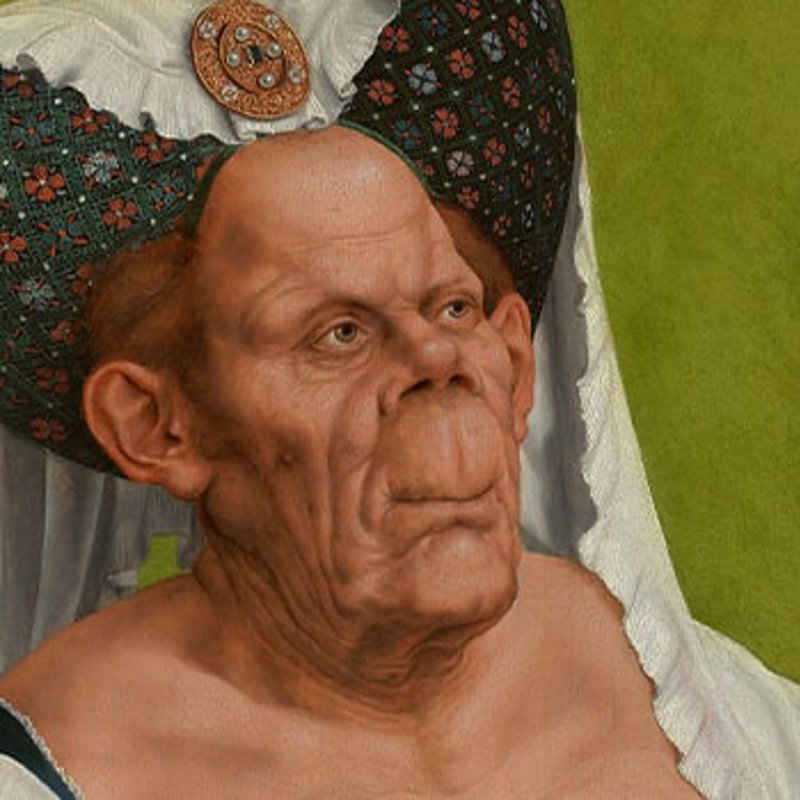About
Thirty years ago, Dame Paula Rego (1935–2022), our first Associate Artist (1990–2), was commissioned to create a mural for the then new Sainsbury Wing Dining Room. The result, Rego’s ‘Crivelli’s Garden’, took its inspiration from an altarpiece by the 15th-century Italian artist Carlo Crivelli, ‘La Madonna della Rondine (The Madonna of the Swallow)’.
Rego reimagined Crivelli’s house and garden to explore the narratives of women in biblical history and folklore based on paintings across the collection and stories from the medieval Golden Legend. Her figures inspired by the Virgin Mary, Saint Catherine, Mary Magdalene and Delilah, share the stage with other women from biblical and mythological histories.
Rego saw the work as a tribute to the artists who had also used the Golden Legend as a source for their paintings. She did not necessarily replicate the women saints portrayed in the National Gallery Collection but drew inspiration from them to depict figures and people she knew. These included friends, members of her family and staff at the National Gallery whom she asked to sit for her, including Erika Langmuir, Lizzie Perrotte and Ailsa Bhattacharya who were members of the Education Department at the time.
Paula Rego
Paula Rego was born in Lisbon in 1935, under the dictatorial regime of Portuguese prime minister, Salazar. Her parents were keen anglophiles and Rego was encouraged to move to the UK in 1952 to further her studies before later enrolling at the Slade School of Art. She continued to live between London and Lisbon for the rest of her life. Rego died in June 2022 at the age of 87.
Rego was part of the London Group and is mostly known for her paintings and prints based on narratives from folk tales and children’s stories. Her figuration often focusses on enigmatic female figures that are both caricature in style but also fantastical in their themes. Rego’s figures and compositions were frequently inspired by her personal fears, desires, and a passion to fight injustices, particularly those against women.
Her large-scale figurative pictures offer complex narratives that are loaded with psychological tensions and dramas, exploring a whole range of emotions that lie just below the surface of things.
Carlo Crivelli
Read more about Crivelli and his paintings in the collection.
Digital activity at the National Gallery is supported by Bloomberg Philanthropies Digital Accelerator

















